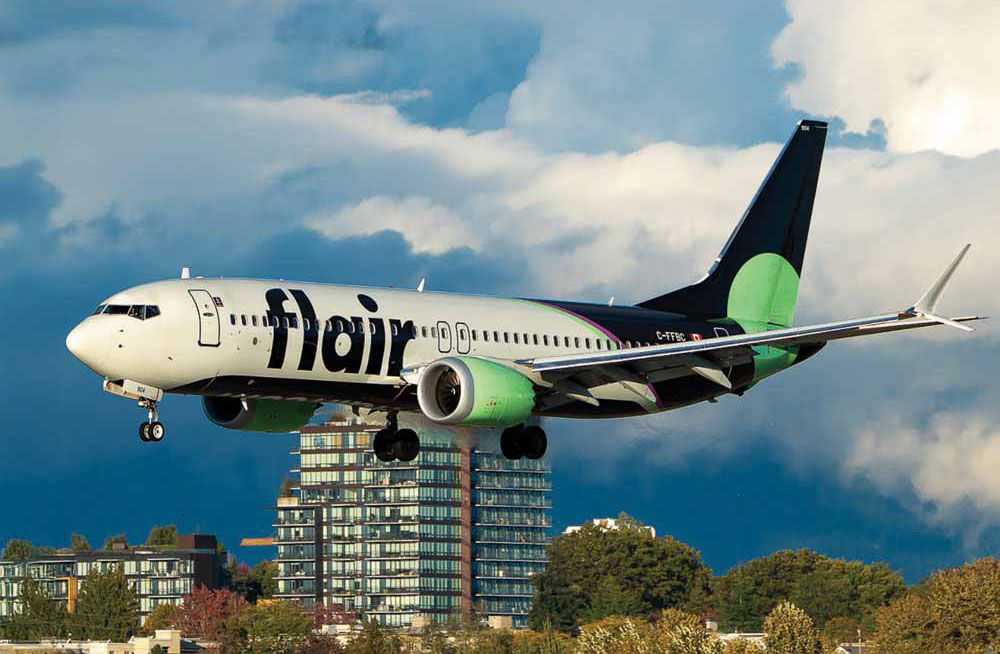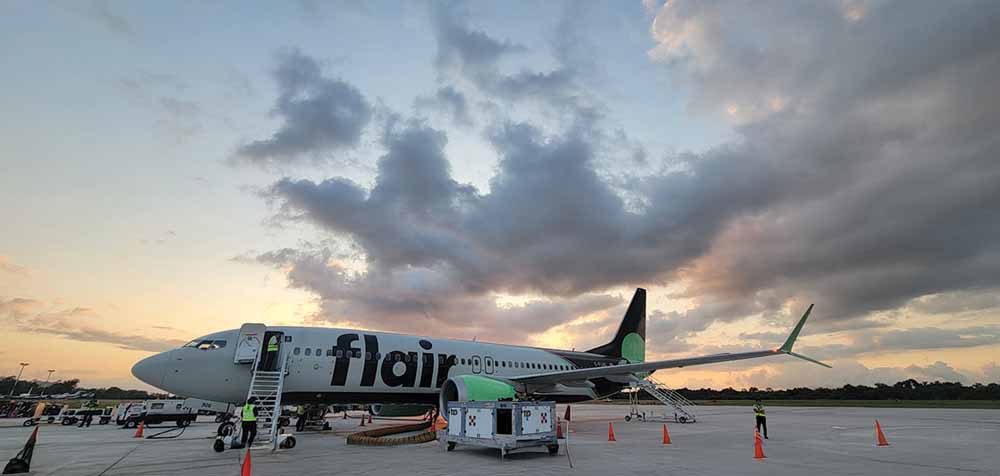Flair

A Flair B-737 MAX prepares to land at Vancouver International Airport. Photo: Derek MacPherson
At A Glance
Pilots joined ALPA: 2021
Number of pilots/flightcrew members: 300
Pilot bases: Vancouver, B.C.; Calgary and Edmonton, Alb.; and Toronto and Waterloo-Kitchener, Ont.
Hubs/key markets: Toronto Pearson International Airport, Vancouver International Airport, and Edmonton International Airport
Headquarters: Edmonton, Alb.
Operations: Flair, Canada’s first independent ultra-low-cost carrier, operates scheduled domestic passenger service to 35 Canadian and other North American destinations.
Fleet: 18 B-737 MAX 8s and 2 B-737-800NGs
As the sole ultra-low-cost carrier in Canada, Flair Airlines stands as a resilient option in the nation’s aviation landscape, defying persistent rumours of its impending demise. And no one knows this more than Flair pilots.
In a show of dedication to its workforce and the airline’s future, Flair took significant steps forward last spring by signing a letter of understanding that brought first officer pay in line with that of first officers at other carriers. This move underscored Flair’s commitment to remaining competitive and sustainable.
In late summer, the pilot group’s Master Executive Council (MEC) had a change in leadership. Capt. John Sinclair, the MEC chair, stepped down for personal reasons, prompting an election. F/O Aimee Wintle, the vice chair, was voted chair, and Capt. Brooklyn Anderson was elected vice chair. Capt. Marcelo Sagel continued in his role as secretary-treasurer. This revitalized leadership team wasted no time demonstrating its proactive stance, forging stronger connections with ALPA national and leveraging its resources.
With a strategic eye toward future growth and stability, the MEC is busy laying the groundwork for comprehensive contract negotiations planned for this fall as Flair pilots continue to show that they can adapt and thrive in the Canadian aviation market.
